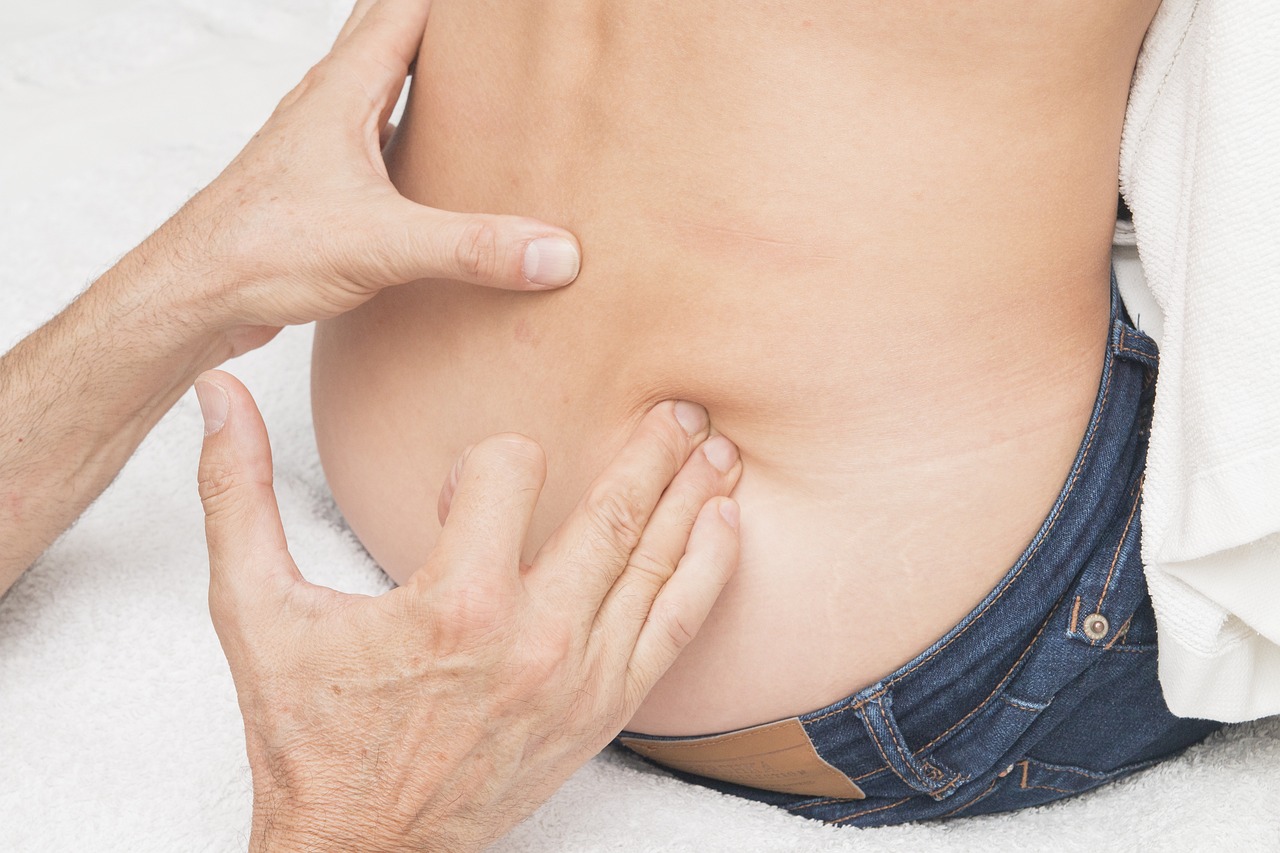As a key component of the human musculoskeletal system, the psoas muscle plays an essential role in our daily life, from maintaining posture to enabling movement. However, its importance often goes unnoticed until problems arise, such as lower back pain or hip discomfort, hinting at potential psoas distress. With the understanding that the health of this deep-seated muscle greatly affects our overall physical well-being, it becomes vital to explore the psoas muscle in more depth – its anatomy, function, and maintenance, as well as common ailments and their remedies.
Understanding the Psoas Muscle
To fully understand the function and importance of the psoas muscle, one must explore its anatomical structure, location, and integral role in various bodily movements. The psoas muscle, often referred to as the ‘muscle of the soul’, is a part of the iliopsoas muscle group and plays a key role in maintaining upright posture, allowing for flexibility and rotation of the trunk.
When the psoas muscle is healthy, it allows for fluid movements and a balanced body. However, when the psoas muscle is inflamed, it can cause a myriad of issues including lower back pain, postural problems, and even difficulties with bowel movements. Psoas muscle inflammation can be a result of overuse, trauma, or an unhealthy diet.
A psoas muscle diet, rich in anti-inflammatory foods can help manage and prevent inflammation. Foods such as leafy greens, fatty fish, berries, and olive oil are beneficial. Conversely, foods contributing to inflammation, such as processed foods or those high in sugar, should be minimized. Understanding the psoas muscle and the impact of diet and inflammation allows for better management and prevention of related health issues.
The Anatomy of Psoas Muscle
Having understood the functions and importance of the psoas muscle, it becomes important to examine its anatomical structure and location within the human body. The psoas muscle is a long fusiform muscle located on the side of the lumbar region of the vertebral column and brim of the lesser pelvis.
The psoas muscle origin can be traced to the anterior surfaces of the base and bodies of the lumbar vertebrae. It is a combination of two muscles, the psoas major and the psoas minor. The psoas major is the larger and more significant muscle, originating from the vertebrae and discs between them, and descending through the pelvis to the lesser trochanter of the femur. The psoas minor, present in only about half of the population, runs a similar course but ends at the level of the pelvis.
In terms of psoas muscle development, it plays an important role in human locomotion. It is responsible for flexing the hip joint and lifting the upper leg towards the body, as in walking. Additionally, it affects posture and stabilizes the spine, making it essential for maintaining human upright position.
Functions of the Psoas Muscle
The psoas muscle, often referred to as the ‘fight or flight’ muscle, plays vital roles in both movement and stability. As a key player in flexion, it enables us to lift our legs towards our bodies, contributing greatly to locomotion. Moreover, its strategic location along the spine aids in maintaining upright posture, regulating balance and providing lumbar support.
Psoas Muscle’s Role
Integral to a multitude of bodily functions, the psoas muscle plays a critical role in activities such as walking, running, and even sitting. It is key in facilitating hip flexion and lateral rotation, whilst contributing to spinal stabilization. Psoas stretching techniques are therefore essential to maintain this muscle’s flexibility and prevent stiffness. These techniques often involve yoga or pilates exercises that target hip extension. Additionally, a balanced psoas muscle diet, rich in protein, vitamin C and Omega-3 fatty acids, can aid in muscle recovery and reduce inflammation. It’s crucial to acknowledge that the psoas muscle, with its central location and role in basic movements, is a core component of human biomechanics, highlighting the necessity for its regular care and conditioning.
Psoas Muscle in Motion
Often engaged in both voluntary and involuntary motions, the psoas muscle performs critical functions including initiating hip flexion, providing lumbar spine stability, and aiding in maintaining upright posture. Its role extends beyond physical motion, impacting internal physiological processes and emotional health. The psoas muscle’s influence on digestion is significant, with its contraction and relaxation affecting the movement of food through the intestines. Its close proximity to the diaphragm further enhances this influence, facilitating smooth abdominal processes. Emotionally, the psoas is associated with our fight or flight response. Tension in the psoas can reflect psychological stress, while relaxation can promote emotional well-being. The psoas, thereby, interlinks physical, physiological, and emotional aspects of our health.
Connection Between Psoas and Back Pain
The psoas muscle, fundamental to core stability and movement, is often implicated in instances of back pain. To understand this correlation, it is first necessary to assess the pivotal role this muscle plays in the biomechanics of the human body. From there, we can examine how dysfunction or imbalance in the psoas may contribute to the onset of back pain, considering both the direct and indirect causative factors.
Psoas Muscle’s Role
A significant correlation exists between the psoas muscle and back pain, with the muscle’s function playing an essential role in this prevalent health issue. Psoas Muscle Diseases and Psoas Muscle Aging can severely impact this muscle’s capacity to perform its roles.
- Psoas Muscle Diseases, such as psoas syndrome and psoas abscess, can lead to dysfunction and pain.
- Psoas Muscle Aging can result in muscle atrophy, decreased flexibility and increased stiffness.
- This muscle’s role in maintaining upright posture, hip flexion and lumbar spine stability, when compromised, can lead to back pain.
Back Pain Causes
Unraveling the intricate relationship between the psoas muscle and back pain reveals multifaceted causes, primarily stemming from muscle dysfunction and aging-related changes. A significant contributor to this discomfort is the Sedentary Lifestyle Impact, which leads to psoas muscle shortening and tightening, thereby causing lower back pain due to the muscle’s connectivity to the lumbar spine. Additionally, the Emotional Stress Contribution can lead to muscle tension, including in the psoas, exacerbating back pain. Chronic stress can cause the psoas muscle to remain contracted, affecting posture and leading to back discomfort. Understanding these factors can provide a detailed perspective on the relationship between the psoas muscle and back pain, and may guide interventions to alleviate such pain.
Psoas Muscle and Hip Discomfort
Experiencing discomfort in the hip area can often be traced back to issues with the psoas muscle, a deep-seated core muscle connecting the lumbar vertebrae to the femur. This muscle plays a vital role in maintaining the body’s biomechanical balance, influencing both posture and movement. Psoas-related sports injuries are common, particularly in sports that require repetitive hip flexion or extension, such as running, soccer, and gymnastics.
Regular stretching of the psoas muscle can provide several benefits, including improving hip flexibility, reducing the risk of injuries, and alleviating hip discomfort. The health and functionality of the psoas muscle directly affect the hip’s range of motion and stability.
For a better understanding of the relationship between the psoas muscle and hip discomfort, consider the following points: – The psoas muscle acts as a stabilizer and mover for the hip joint and lumbar spine. – A tight or overworked psoas muscle can result in hip discomfort or pain. – Regular psoas stretching can alleviate discomfort by improving muscle flexibility and reducing strain.
Ultimately, maintaining a healthy psoas muscle is essential for excellent hip function and overall body movement.
Impact of Psoas Muscle on Mobility
The impact of the psoas muscle on mobility is pivotal, encompassing aspects such as muscle functionality, improvement methods for mobility, and the relation to posture. A thorough understanding of the psoas muscle’s functionality is essential in evaluating mobility issues, as it is integral to movements such as walking and running. In addition, exploring methods to enhance psoas mobility and evaluating the muscle’s role in maintaining posture can contribute greatly to improving overall mobility.
Psoas Muscle Functionality
Integral to our mobility, the functionality of the psoas muscle plays a significant role in various complex movements, including walking, running, and even maintaining proper posture. Inflammation of the psoas muscle can cause discomfort and limit mobility, emphasizing the need for proper care and stretching.
- Psoas muscle inflammation often results from overuse or injury, leading to pain and reduced mobility.
- Regular psoas muscle stretching can help maintain flexibility, prevent stiffness, and enhance overall motion.
- The muscle’s unique position also impacts the alignment of the spine and pelvis, highlighting its role in maintaining posture.
In essence, the psoas muscle’s functionality extends beyond mere movement, extending to aspects of posture and flexibility. In the next section, we will explore strategies to improve psoas mobility.
Improving Psoas Mobility
Given the critical role of the psoas muscle in facilitating movement and maintaining posture, it becomes imperative to discuss strategies for enhancing its mobility. The psoas stretching benefits are substantial, contributing to improved flexibility and reduced muscle tension. Incorporating specific exercises, such as yoga for psoas, can be particularly advantageous. Yoga poses like the ‘Psoas Release’ and ‘Warrior I’ specifically target this muscle, encouraging elongation and relaxation. Such activity, when performed consistently, can increase the muscle’s range of motion and decrease the risk of injury. Improved psoas mobility can result in better overall body movement and higher performance in physical activities. Prioritizing psoas mobility exercises can lead to significant benefits in terms of general fitness and wellness.
Psoas Muscle and Posture
Understanding the relationship between the psoas muscle and posture provides key insights into the profound impact this muscle has on overall mobility. A well-functioning psoas muscle contributes to upright posture, reduces lower back pain, and enhances stability and balance. However, a tight or imbalanced psoas muscle can lead to poor posture and mobility issues.
Consider the following points:
- Psoas Stretching Techniques: Regular stretching can help lengthen a tight psoas, improving posture and mobility. Techniques include the Psoas Release, Psoas Stretch, and Seated Psoas Stretch.
- Muscle Imbalance Correction: Strengthening the muscles that oppose the psoas, like the glutes and abdominals, can correct imbalances and improve posture.
- Posture Awareness: Being conscious of your posture during daily activities can help maintain psoas health and prevent further imbalances.
Importance of Psoas Muscle in Joint Function
Although often overlooked, the psoas muscle plays an essential role in the function and mobility of various joints, particularly the hip and spine, making it a key component in the biomechanical workings of the human body. The psoas muscle, a primary connector between the torso and the lower limbs, contributes greatly to the stability and range of motion in these areas.
Psoas muscle disorders and diseases can severely impact joint function. For instance, psoas muscle tightness can lead to limited hip joint mobility and altered gait, while psoas muscle weakness can result in an unstable spine and increased risk of lower back pain.
Furthermore, the psoas muscle exerts a direct influence on the hip joint’s biomechanics. It facilitates flexion and external rotation, essential movements in daily activities like walking and running. When the psoas muscle is compromised, whether by disease or disorder, this can lead to reduced functionality and efficiency in these movements.
Role of Psoas Muscle in Body’s Strength
Regarded as one of the most powerful muscles in the human body, the psoas muscle greatly contributes to overall body strength and power generation, particularly in movements involving the core and lower limbs. It plays a pivotal role in running, jumping, and maintaining proper posture.
In order to maintain its strength and functionality, the psoas muscle requires proper nutrition. This is because: – Adequate protein intake promotes muscle development and repair. – Minerals, such as calcium and magnesium, support muscle contraction and relaxation. – Vitamins, particularly B vitamins, aid in energy production for muscle function.
However, the strength and functionality of the psoas muscle can be compromised by certain diseases. Psoas muscle diseases, such as psoas syndrome or psoas tendinitis, can lead to a decrease in muscle strength, resulting in compromised mobility and function. These conditions often present with pain, stiffness, and limit the range of motion.

Exercises to Strengthen the Psoas Muscle
To mitigate the potential weakness and functional compromise caused by psoas muscle diseases, certain exercises are specifically designed to bolster the strength of the psoas muscle. These exercises employ Psoas Stretching Techniques and Psoas Activation Methods to systematically engage and elongate the muscle, thereby stimulating strength development.
Psoas Stretching Techniques often involve poses that lengthen the muscle, such as the lunge stretch. This technique requires one to kneel on one knee, with the other foot flat on the ground, creating a 90-degree angle at both knees. The practitioner then leans forward, keeping the torso upright. This pose effectively elongates the psoas muscle, promoting flexibility and strength.
Meanwhile, Psoas Activation Methods generally incorporate movements that contract and release the psoas muscle. One effective method is the standing leg lift. In this exercise, one stands upright, lifts one knee to hip level, holds for a few seconds, then lowers it, repeating the action several times. This specific movement engages the psoas muscle, helping to improve its strength and function.
In combination, these exercises provide a holistic approach to strengthening the psoas muscle, potentially reducing susceptibility to injury and improving overall bodily function.
Tips to Maintain Psoas Muscle Health
Maintaining the health of the psoas muscle requires consistent attention and deliberate action, involving targeted exercises, balanced nutrition, and mindful lifestyle habits.
Psoas muscle nutrition is an essential factor to contemplate for preserving this muscle’s health. Consuming a balanced diet rich in lean proteins, fruits, vegetables, and complex carbohydrates can provide the necessary nutrients for the muscle to recover and strengthen after activities. Hydration is also crucial, as water helps transport nutrients to the muscle cells and flush out toxins.
Emotional stress impact on the psoas muscle is significant, as stress can cause the muscle to tighten and shorten, leading to discomfort and reduced mobility. Mindfulness practices such as yoga and meditation can help manage stress and promote relaxation of the psoas and other muscles.
To sum up, here are three key tips to maintain psoas muscle health: – Prioritize balanced nutrition, ensuring adequate protein intake and hydration. – Engage in regular targeted exercises to strengthen and stretch the muscle. – Implement mindfulness practices to manage stress and promote muscle relaxation.
Common Psoas Muscle Injuries and Treatments
While the psoas muscle is resilient and adaptable, it is susceptible to certain injuries that can result from factors such as overuse, poor posture, or insufficient stretching, which can impair mobility and quality of life to a great extent.
One common injury is psoas muscle inflammation, often triggered by repetitive motions or poor biomechanics. Symptoms include pain in the lower back or groin, oftentimes radiating down the leg. Conservative treatments such as physical therapy, rest, and nonsteroidal anti-inflammatory drugs (NSAIDs) are typically the first line of intervention.
In severe cases, where conservative treatments fail, psoas muscle surgery may be necessary. This could involve surgical release or debridement of the psoas tendon, performed either through a traditional open procedure or minimally invasive arthroscopy. Post-surgery, a structured rehabilitation program is essential, focusing on gradual strengthening and stretching of the psoas muscle to restore function and prevent recurrence.
Frequently Asked Questions
Can the Psoas Muscle Affect Digestion?
Yes, the function of the digestive system can be influenced. The application of Psoas Release Techniques and Psoas Muscle Stretching may aid in improving digestion by relieving tension and enhancing abdominal organ function.
Is There a Connection Between Psoas Muscle and Anxiety?
Yes, there is a link. Anxiety can lead to muscular tension, including in the psoas. Conversely, psoas stretch benefits may alleviate this tension, serving as an effective anxiety management technique. Further research is warranted.
Does Pregnancy Impact the Psoas Muscle?
Yes, pregnancy can impact the condition of certain muscles. Specifically, psoas strengthening exercises and psoas muscle stretches can help manage changes and discomfort due to the increased load and altered posture during pregnancy.
Are There Specific Yoga Poses Beneficial for the Psoas Muscle?
Yes, certain yoga poses can be beneficial. Psoas stretching techniques like the ‘Warrior I’ pose aid in lengthening the muscle, while psoas strengthening exercises like the ‘Bridge’ pose help to fortify it.
Can Psoas Muscle Issues Cause Respiratory Problems?
Yes, issues with the psoas muscle can potentially cause respiratory problems. Psoas muscle injuries can restrict diaphragmatic movement, impeding breathing. As a result, psoas muscle strengthening exercises might alleviate such issues by enhancing muscle flexibility and function.


